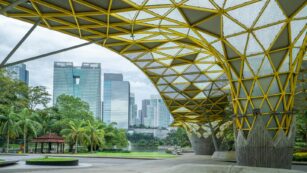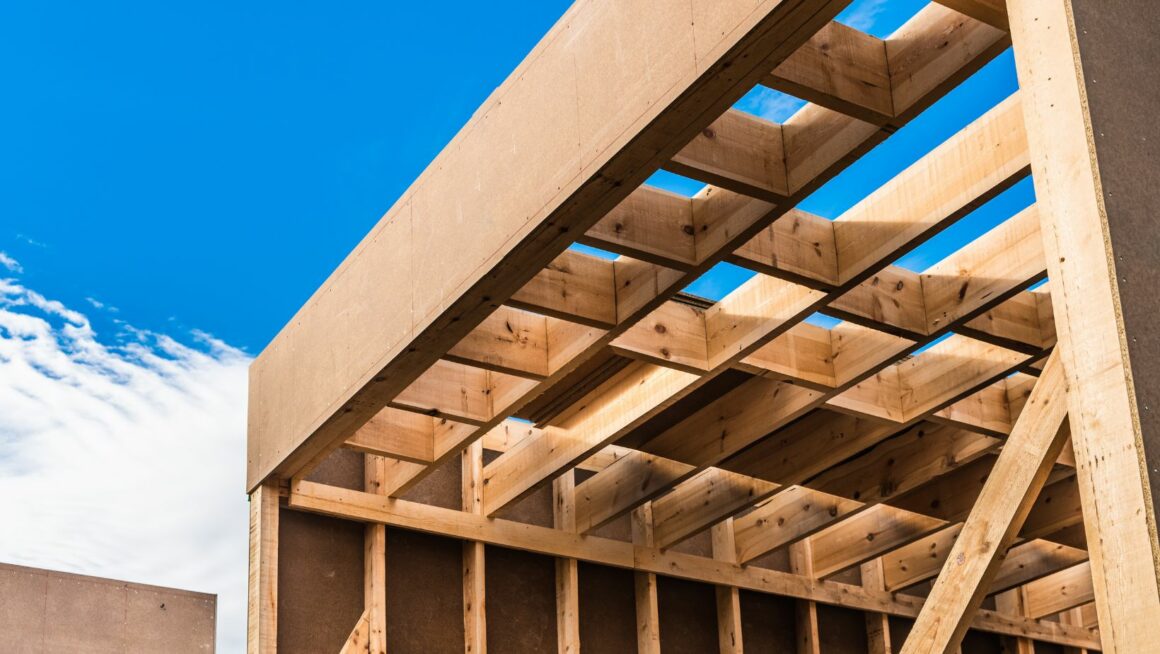Building a sustainable house is more than just a trend; it’s a forward-thinking approach to living that prioritizes environmental responsibility and energy efficiency. As awareness about the environmental impact of traditional building practices grows, more people are seeking ways to minimize their carbon footprint through eco-friendly home construction. This shift isn’t just beneficial for the planet—it can also lead to significant cost savings over time.
How to Build a Sustainable Housing
Building a sustainable house involves several critical steps, starting from the planning phase to the choice of materials and the implementation of energy-efficient systems. The following guide provides practical insights into creating a home that’s both environmentally friendly and sustainably built.
Planning and Design
 Initial planning is crucial for the sustainability of a house. Selecting a suitable location that maximizes natural light reduces the need for artificial lighting and therefore energy consumption. Design the house to take advantage of its natural surroundings, such as incorporating large windows on the sun-facing sides for heat during the winter months. Moreover, consider the size of the home; a smaller home requires less energy to heat and cool, reflecting sustainability principles.
Initial planning is crucial for the sustainability of a house. Selecting a suitable location that maximizes natural light reduces the need for artificial lighting and therefore energy consumption. Design the house to take advantage of its natural surroundings, such as incorporating large windows on the sun-facing sides for heat during the winter months. Moreover, consider the size of the home; a smaller home requires less energy to heat and cool, reflecting sustainability principles.
Energy Efficiency and Renewable Energy
Integrating energy-efficient solutions is essential in sustainable house building. Installing solar panels, for example, can provide a clean and renewable source of energy. Moreover, using energy-star-rated appliances and LED lighting enhances energy efficiency. Another pivotal element is the installation of proper insulation and high-quality windows, which help in maintaining interior temperatures and reducing reliance on heating and cooling systems.
Indoor Environmental Quality
 Maintaining a healthy indoor environment is just as important as the structural and energy aspects of building a sustainable house. Use low-VOC (volatile organic compounds) paints and eco-friendly adhesives to minimize the release of toxic chemicals into your home. Ensuring adequate natural ventilation and installing air purification systems can also significantly improve indoor air quality.
Maintaining a healthy indoor environment is just as important as the structural and energy aspects of building a sustainable house. Use low-VOC (volatile organic compounds) paints and eco-friendly adhesives to minimize the release of toxic chemicals into your home. Ensuring adequate natural ventilation and installing air purification systems can also significantly improve indoor air quality.
By following these guidelines, one can build a house that not only meets personal needs but also contributes positively to the environment. This approach aligns with the growing demand for sustainable living practices that prioritize the well-being of the planet and future generations.
Step-by-Step Guide on Building a Sustainable House
Building a sustainable house begins with methodical planning and incorporates specific construction techniques and landscaping designs. This guide details the essential steps involved in creating an eco-friendly home that reduces environmental impact and promotes energy efficiency.
Planning and Design
 Initial planning is crucial for sustainability. Choose a site that maximizes natural light and consider the home’s orientation to take full advantage of wind patterns for natural ventilation. Use sustainable design principles like compact floor plans to minimize wasted space and materials. Selecting the right materials is equally critical; prioritize those with low environmental impact, such as bamboo and recycled steel. Incorporate advanced systems in the design, including solar panels, energy-efficient heating, and cooling systems, and water conservation setups.
Initial planning is crucial for sustainability. Choose a site that maximizes natural light and consider the home’s orientation to take full advantage of wind patterns for natural ventilation. Use sustainable design principles like compact floor plans to minimize wasted space and materials. Selecting the right materials is equally critical; prioritize those with low environmental impact, such as bamboo and recycled steel. Incorporate advanced systems in the design, including solar panels, energy-efficient heating, and cooling systems, and water conservation setups.
Construction Techniques
The construction phase should focus on reducing carbon footprints. Employ green construction practices like ensuring proper insulation to enhance energy efficiency and reduce heating and cooling costs. Utilize high-performance windows and seal all building envelopes thoroughly to prevent heat loss. Opt for sustainable building materials that are locally sourced to reduce transportation-related emissions. Techniques such as rainwater harvesting and the installation of greywater systems for irrigation can also be integrated during this phase to further support sustainability.
Landscaping and External Features
 Sustainable landscaping is about more than just planting native species. Design gardens and outdoor spaces that require minimal water and maintenance. Incorporating permeable paving materials can help manage stormwater, reducing runoff and increasing the infiltration of rain into the ground. Strategic placement of trees can provide natural cooling, reducing reliance on air-conditioning systems. Additionally, consider green roofs or living walls to improve insulation and decrease urban heat effects. These features not only enhance the sustainability of your home but also contribute to its aesthetic and market value.
Sustainable landscaping is about more than just planting native species. Design gardens and outdoor spaces that require minimal water and maintenance. Incorporating permeable paving materials can help manage stormwater, reducing runoff and increasing the infiltration of rain into the ground. Strategic placement of trees can provide natural cooling, reducing reliance on air-conditioning systems. Additionally, consider green roofs or living walls to improve insulation and decrease urban heat effects. These features not only enhance the sustainability of your home but also contribute to its aesthetic and market value.

